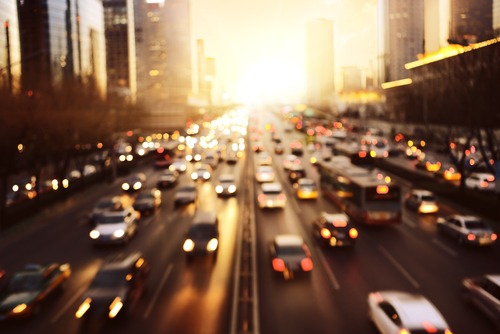
A new report urges states to consider the impact of COVID-19 on everything from transit use to infrastructure resiliency as they make decisions surrounding transportation spending in the coming years.
Publishers of “Transportation and COVID-19: A State Guide to Policy and Priorities,” hope state legislatures and state-focused policy organizations will use the guide to help with transportation and infrastructure policy decisions both during and after the COVID-19 recovery.
Written by the Reason Foundation, a Libertarian think tank, the report focuses on rethinking what transportation means in the post-COVID world, and how to pay for it.
“The COVID-19 pandemic has introduced unprecedented uncertainty into everyday transportation operations and long-term transportation planning,” the report said. “Travelers have drastically reduced commuting and their use of crowded, shared transportation modes, including mass transit. It is unclear when—or if—travel will return to past trends or whether this ‘new normal’ will persist indefinitely.”
According to the Foundation, transportation and infrastructure policy makers should lean more towards privatization.
The Foundation encourages policy makers to use public private partnerships (P3s) to fund long-term infrastructure needs.
“Long-term infrastructure P3s are especially valuable in the post-Covid-19 environment in which state and local governments are under severe fiscal stress. Because these long-term P3s are financed based on future revenues over a long period (30 to 50 years), much-needed major projects can be financed now, and construction can begin much earlier than under normal cash-based project funding,” the report said.
The foundation highlights revenue risk and availability payment models of P3 arrangements, where a private entity would design, build, finance, operate, and maintain a major facility for an extended period of time, during which the government would pay the entity based on the terms of the long-term contract.
The group also recommends that states re-imagine public transit. Arguing that public transit ridership has continued to fall since the 1920s, the group said the focus should be on mobility access for transit-dependent customers, while transitioning to mobility coordinators who would oversee contracts with private, non-profit, and other public entities to operate transit services.
“U.S. transit service is failing both riders and taxpayers. Most transit service is oriented in a radial structure, designed to funnel riders to downtown job centers. Yet the location of employment is dispersed. Between 50 to 80 percent of all employment is located outside of central business districts,” the report said. “We need to create a new kind of transit service that serves America’s 21st century requirements instead of 1920’s development patterns.”
The group also recommends states reduce subsidies to Amtrak, which it calls a tax burden.
“Passenger trains are romantic but obsolete. They are expensive, inflexible, and slow— even high-speed trains are much slower than flying. Amtrak spends four times as much to move someone one passenger- mile as the airlines, and at least six times as much as intercity bus companies. About half of Amtrak’s costs are subsidized, while subsidies to air and bus travelers are small,” the report said. “Amtrak is an insignificant part of America’s transportation network: airlines carry more than 100 times and motor coaches carry 10 times as many passenger-miles as intercity passenger trains. But as a burden on state taxpayers, passenger trains can become quite significant.”
Additionally, the report urges states to look into user fees to fund infrastructure, specifically using fuel taxes to pay for roads and bridges. The group recommended that states protect fuel tax revenues for use in transportation infrastructure through legislation.
The COVID-19 pandemic should be a reminder to transportation and infrastructure planners, the report said, to make transportation infrastructure more resilient. Changes in traffic patterns, caused by moves to the suburbs and less commuting caused by increased working from home will dramatically change how people use roads.
“The COVID-19 pandemic is likely to change transportation patterns, especially if it accelerates decentralization of people from city centers to suburbs and exurbs. Past policies aimed at emphasizing transit and discouraging driving will no longer make sense—if they ever did,” the report said. “The anti-auto movement may have made sense 50 years ago when cars were gas guzzlers, city skies were visibly polluted, and highway accidents killed more than 50,000 people a year. Since then, average fuel economies have more than doubled, highway vehicles produce 90 percent less pollution despite being driven three times as many miles each year, and fatalities per billion passenger-miles have declined by 75 percent…Rather than spending more money to sustain modes that do not meet 21st century, post-pandemic travel needs, public officials should prioritize making our highway systems more resilient and reliable for people who increasingly depend on private automobiles for safe travel.”
The group also recommended that states create a “permissive regulatory environment” in order to facilitate changes in transportation technology, like driverless cars.